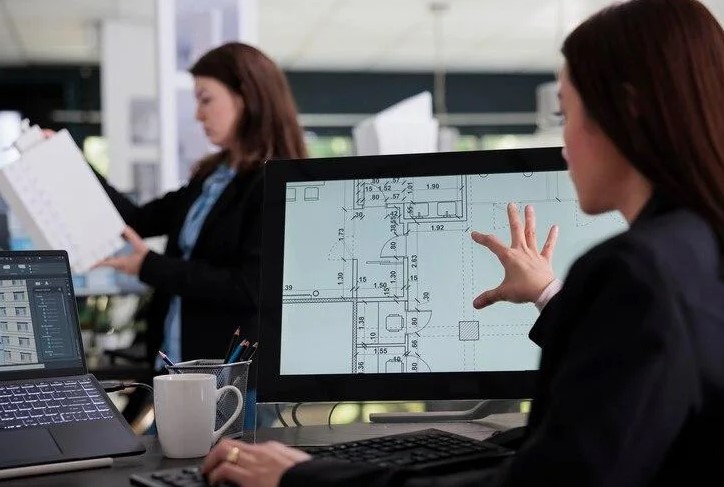
Importance of precision
When it comes to project designs, precision is crucial. Accuracy in every aspect of the design ensures that the final outcome meets the desired specifications and requirements. Whether it's architectural, mechanical, electrical, or any other type of project, precision plays a vital role in its success.
Without precision, projects can suffer from errors, inefficiencies, and potential risks. These can lead to costly rework, delays, and compromised functionality. To avoid such issues, it is essential to incorporate CAD (Computer-Aided Design) drafting services into the design process.
CAD drafting services
CAD drafting services have revolutionized the way projects are designed and executed. By utilizing advanced computer software, CAD drafting services offer a wide range of benefits that significantly enhance accuracy and precision in project designs.
One of the key advantages of CAD drafting services is the ability to create designs with a high level of detail. CAD software allows designers to zoom in and work on intricate elements, ensuring that every component is precisely shaped and positioned. This level of detail contributes to the overall accuracy of the design.
Furthermore, CAD drafting services enable designers to make precise measurements and calculations. The software provides tools that allow for accurate scaling, dimensioning, and alignment of various elements within the design. By utilizing these tools, designers can ensure that their designs adhere to specific standards and requirements.
In addition, CAD drafting services offer the advantage of easy modifications and revisions. Unlike traditional manual drafting, where any change can be time-consuming and prone to errors, CAD software allows designers to make quick and accurate edits. This flexibility significantly improves the precision of the design, as it allows for iterative improvements based on feedback and requirements.
Moreover, CAD drafting services facilitate the integration of different design components. For complex projects that require collaboration among multiple disciplines, such as architecture and engineering, CAD software ensures that various elements seamlessly fit together. This integration minimizes errors and conflicts, leading to a more precise and coordinated design.
Design precision techniques
While CAD drafting services provide the necessary tools and capabilities for achieving accuracy and precision, it is essential to employ certain techniques and best practices during the design process. These techniques further enhance the precision of the final design and improve the overall quality of the project.
1. Standardization
Establishing standardized design practices and components helps maintain consistency and accuracy throughout the project. Using predefined templates, libraries, and guidelines ensures that all designs adhere to the same standards, reducing the risk of errors and inconsistencies.
2. Quality control
Implementing a robust quality control process is crucial for maintaining precision in project designs. Regular reviews, inspections, and checks help identify and rectify any potential errors or discrepancies. By ensuring that the design meets the required specifications and standards, the risk of inaccuracies is significantly reduced.
3. Collaboration and communication
Effective collaboration and communication among project stakeholders are key to achieving precision in project designs. By maintaining open lines of communication and fostering collaboration between designers, engineers, architects, and other relevant parties, potential issues can be identified and addressed early on, ensuring a precise and coordinated design.
4. Continuous learning and improvement
To achieve and maintain precision in project designs, it is important to embrace a culture of continuous learning and improvement. By staying updated with the latest industry trends, technologies, and best practices, designers can enhance their skills and knowledge, leading to more accurate and precise designs.
5. Iterative design process
The iterative design process involves continuously refining and improving the design based on feedback and requirements. By incorporating feedback from project stakeholders and iterating on the design, designers can eliminate potential inaccuracies and enhance the precision of the final outcome.
6. Documentation and version control
Accurate and comprehensive documentation, along with version control, is critical for achieving precision in project designs. By maintaining well-organized documentation and ensuring that the correct design version is used throughout the project, the risk of errors and discrepancies is greatly minimized.
7. Risk assessment
Conducting thorough risk assessments throughout the design process helps identify potential risks and challenges that may impact the precision of the design. By proactively addressing these risks and incorporating mitigation strategies, designers can ensure a more accurate and precise final outcome.
8. Continuous monitoring and evaluation
Regular monitoring and evaluation of the design progress are essential for maintaining precision. By continuously assessing the design against the set requirements and standards, designers can identify and correct any deviations or inaccuracies, ensuring a precise and high-quality design.
By leveraging CAD drafting services and implementing these design precision techniques, project designs can achieve a level of accuracy and precision that was previously unattainable. The combination of advanced software tools and diligent design practices leads to improved efficiency, reduced errors, and enhanced project outcomes.
























